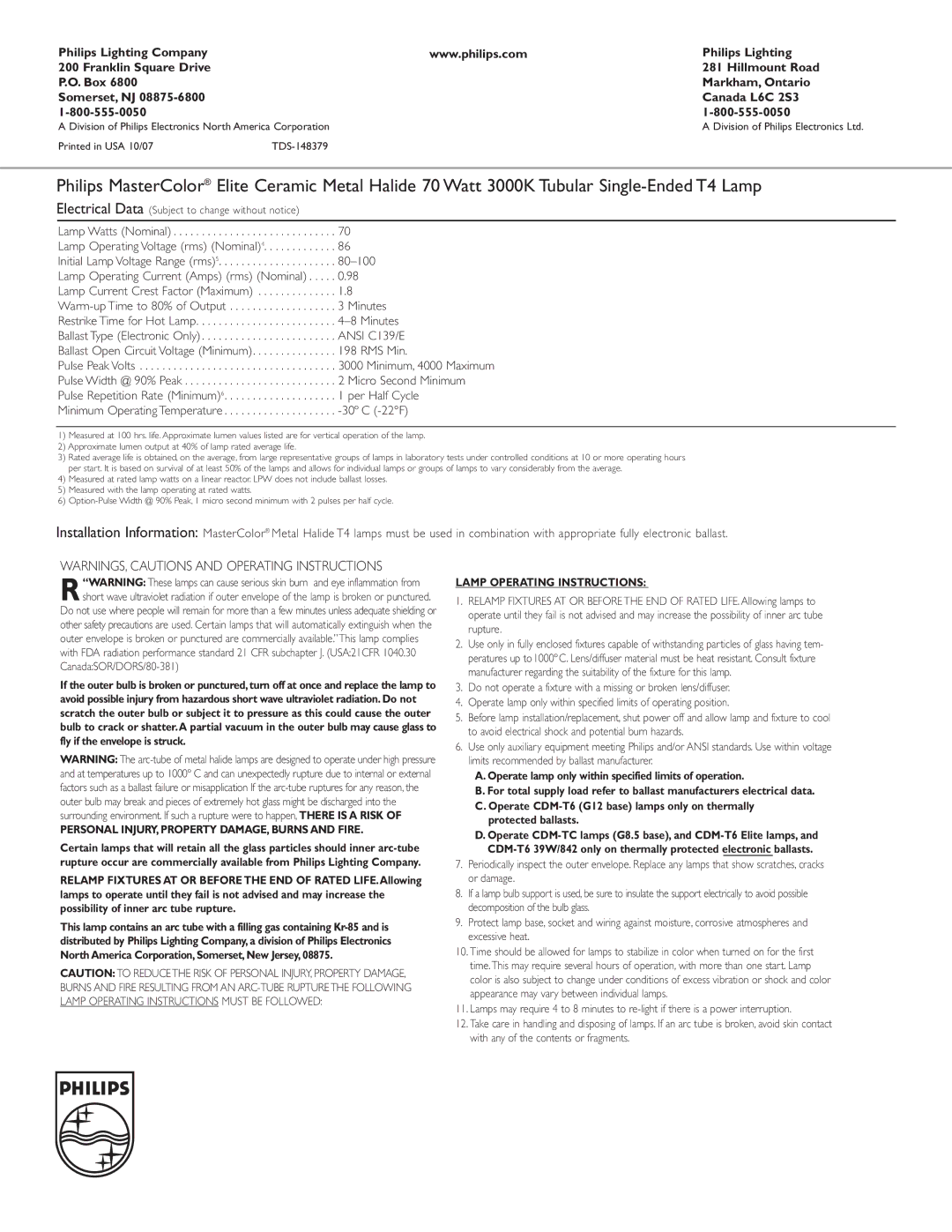14837-9 specifications
The Philips 14837/9 is a stylish and versatile ceiling light fixture that caters to modern lighting needs while adding a touch of elegance to any space. This well-engineered product combines aesthetic appeal with advanced lighting technology, making it suitable for various applications, including living rooms, bedrooms, and dining areas.One of the standout features of the Philips 14837/9 is its innovative LED technology. LEDs are known for their energy efficiency, boasting significantly lower energy consumption compared to traditional incandescent bulbs. This ceiling light not only reduces electricity bills but also has a longer lifespan, which means less frequent replacements and a smaller environmental footprint.
The Philips 14837/9 excels in delivering high-quality light output. With a warm white light color temperature, it creates a cozy atmosphere, perfect for relaxation and gathering with friends and family. The adjustable brightness feature allows users to tailor the light intensity to their preferences, ensuring optimal lighting for various activities, from reading and working to entertaining guests.
Installation is made simple thanks to the clever design of the Philips 14837/9. The fixture is lightweight and comes with all necessary mounting hardware, making it easy for homeowners to set up without requiring professional assistance. Its sleek and modern design seamlessly integrates into contemporary decors, while also offering a minimalist aesthetic that won’t overpower existing furnishings.
Moreover, the Philips 14837/9 is compatible with smart home systems, enabling users to control the lighting from their smartphones or integrated home devices. This versatility provides convenience, allowing users to adjust the lighting remotely or set schedules for automated illumination, enhancing both security and efficiency.
In conclusion, the Philips 14837/9 represents a fusion of modern design and advanced lighting technology. Its energy-efficient LED lighting, adjustable brightness, easy installation, and compatibility with smart home systems make it a top choice for those looking to enhance their living spaces. With its blend of functionality and elegance, it stands out as an exemplary lighting solution for any home.

